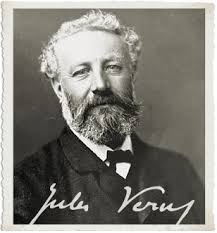Amazing Stories: Premature burials, Immortality, and Open-ended Mysteries
- Karen Lee Street
- Mar 24, 2017
- 3 min read
Today is the anniversary of Jules Verne’s death (8 February 1828 - 24 March 1905); the French writer of fantastical tales such as Journey to the Center of the Earth (1864), From the Earth to the Moon (1865), Twenty Thousand Leagues Under the Sea (1870), Around the World in Eighty Days (1873) is buried in the Cimetière de la Madeleine and his burial monument is so extraordinary, it might have emerged from Edgar Allan Poe’s imagination.

The sculpture, entitled Vers l’Immortalité et l’Eternelle Jeunesse, was designed by Albert-Dominique Roze and depicts a shrouded Jules Verne himself breaking free of his grave with super-human strength.

It brings to mind Poe’s tales of characters buried alive such as “Berenice” (1835), “The Fall of the House of Usher” (1839), “The Premature Burial” (1844), or
“The Cask of Amontillado” (1846).
Illustration of "The Premature Burial" (1919)
by Harry Clarke (1889-1931).
The striking image of Verne’s memorial sculpture was reproduced as part of the masthead of Amazing Stories Magazine, founded in 1926 by Hugo Gernsback, a monthly magazine that ran for almost eighty years. (The Hugo Awards are named after Gernsback.)

(Hugo Gernsback demonstrating two of his inventions: (1) his 'TV glasses' (1963, Life Magazine) (2) his Isolator, which eliminates external noises for concentration (from Science and Invention, July, 1925)
It is no coincidence that tales by both Jules Verne and Edgar Allan Poe featured in the earliest issues of Amazing Stories Magazine, which promised tales of “scientifiction”, defined by Gernsback as “the Jules Verne, H. G. Wells, and Edgar Allan Poe type of story—a charming romance intermingled with scientific fact and prophetic vision.”
Jules Verne has been hailed as the Father of Science Fiction, and Poe is considered a science fiction pioneer. His story “The Unparalleled Adventures of One Hans Pfaall” (1835), about a man flying to the moon in a hot air balloon may have inspired Verne’s “Off On a Comet” (1877) in which humans stranded on a comet fly back to earth in a balloon.

This tale was published (in two parts) in issues 1 and 2 of Amazing Stories. Poe’s “The Facts In The Case Of M. Valdemar” is included in issue 1 and “Mesmeric Revelation” is in issue 2.

Gernsback said about Poe: “It is a great mistake to take this favourite author as only an agreeable fiction writer, and it is impossible not to feel that had his life been different, had he not been overshadowed by poverty, and had he not led so troubled an existence, he would have figured as an enlightened philosopher, and one whose views are far removed from the disagreeable pessimism so prevalent of the present day.”

Verne too applauds Poe and acknowledges his debt to him in his novel From the Earth to the Moon, in which the character Barbicane states: “‘I will only add that a certain Hans Pfaal, of Rotterdam, launching himself in a balloon filled with a gas extracted from nitrogen, thirty-seven times lighter than hydrogen, reached the moon after a passage of nineteen hours. This journey, like all previous ones, was purely imaginary; still, it was the work of a popular American author— I mean Edgar Poe!’ ‘Cheers for Edgar Poe!’ roared the assemblage, electrified by their president's words.”

Verne even went so far as to write as to write a sequel to Poe’s open-ended novel, The Narrative of Arthur Gordon Pym of Nantucket (1838).

Illustration by A. D. McCormick (1898)
Le Sphinx des Glaces (1897) recounts the adventures of the crew of the Halbrane, who set out to discover what happened to Arthur Pym in Antarctica.
As the rather macabre sculpture Vers l’Immortalité et l’Eternelle Jeunesse suggests, Verne is made immortal through his literature, and Verne’s allusions to Poe’s works have contributed to Poe’s own immortality as a writer, allowing him to escape his own far too premature burial.












